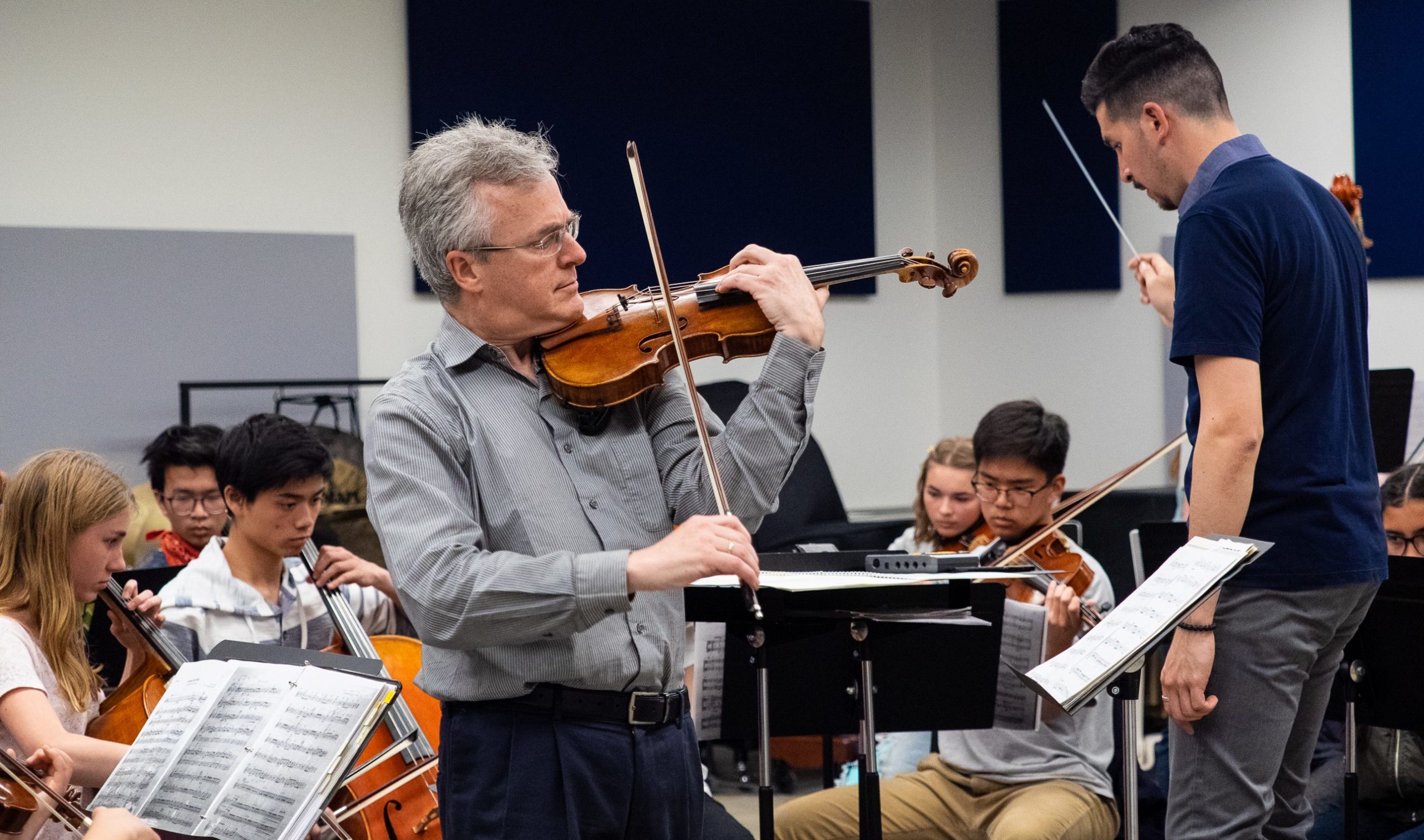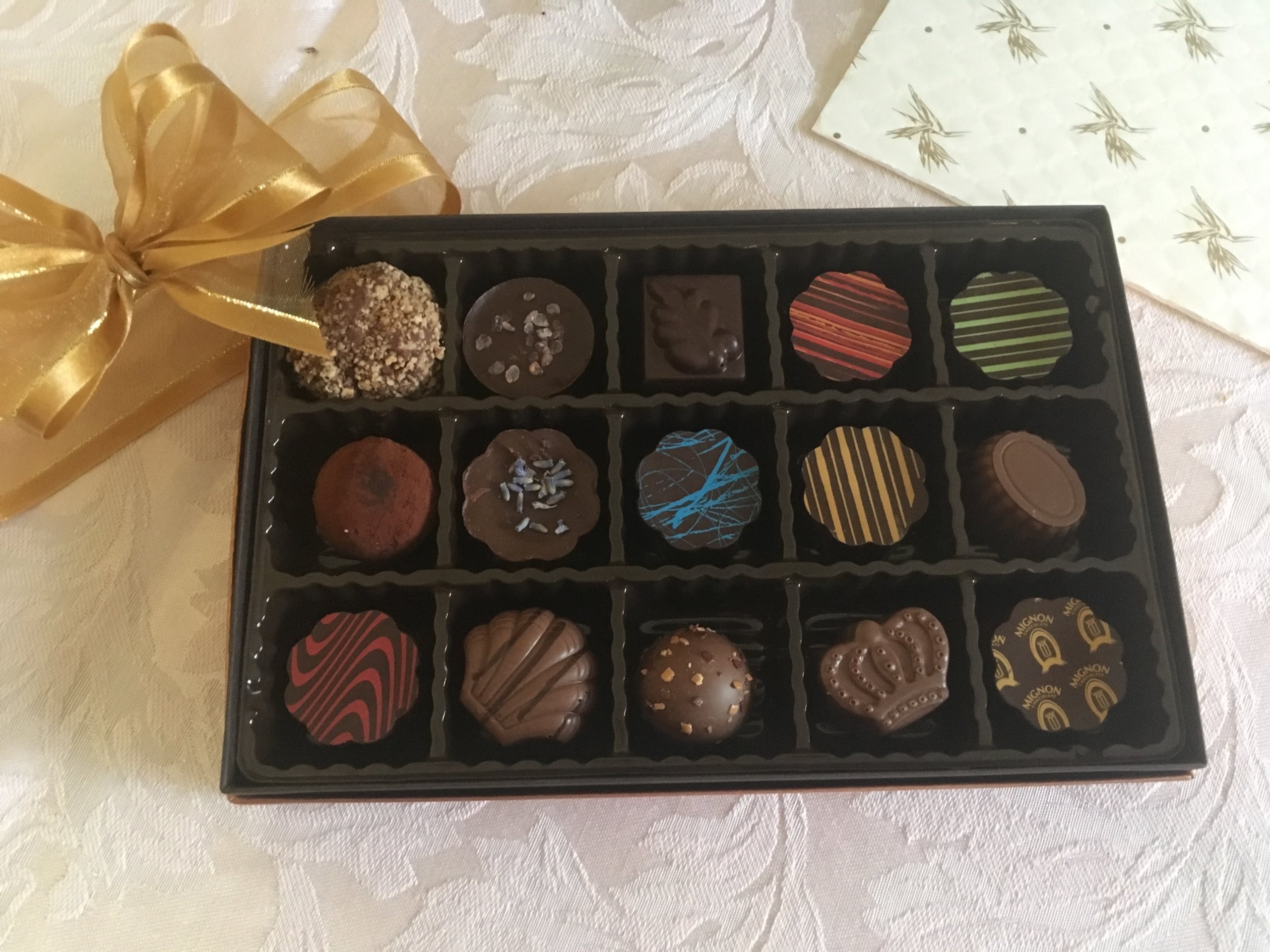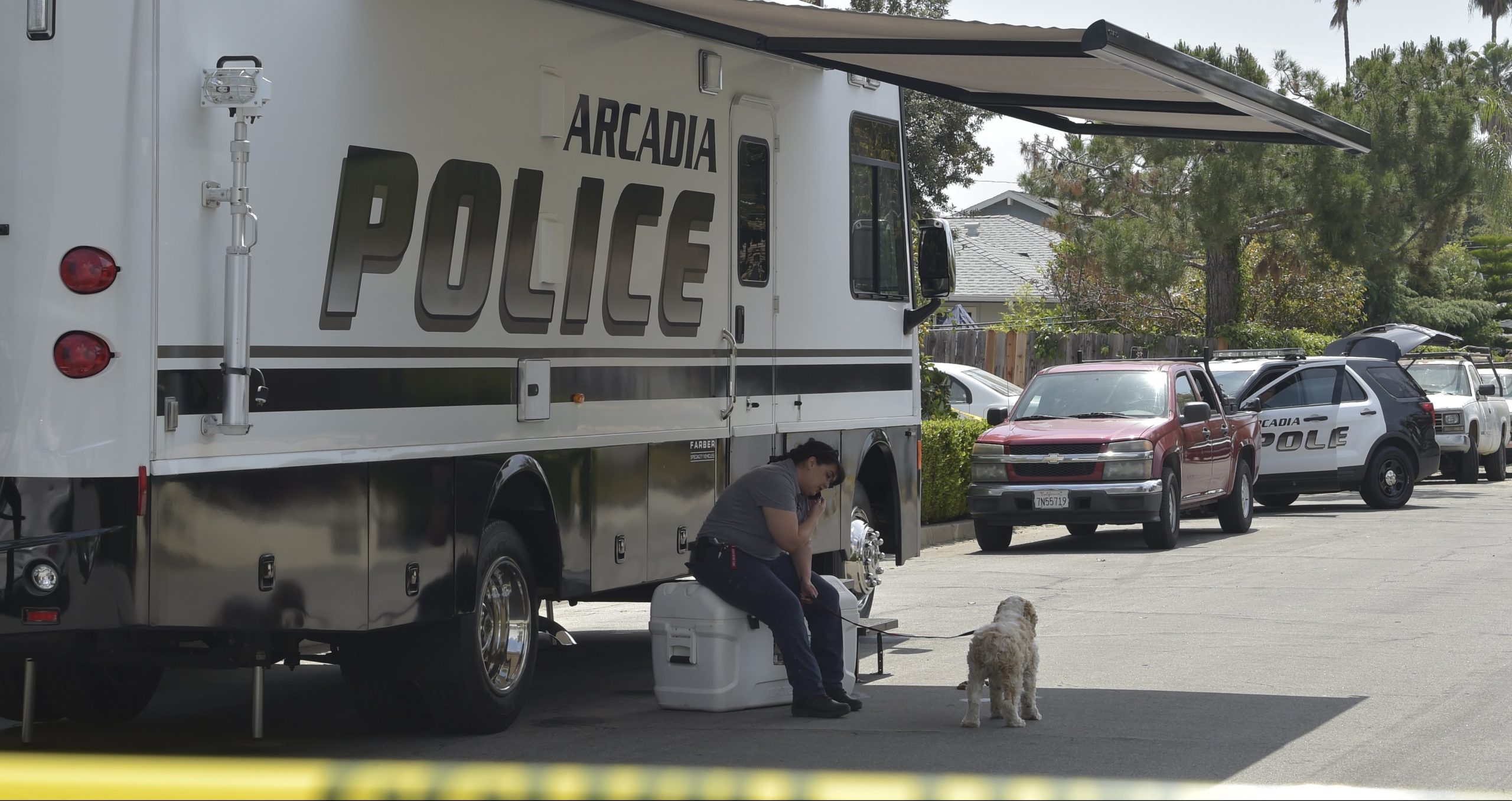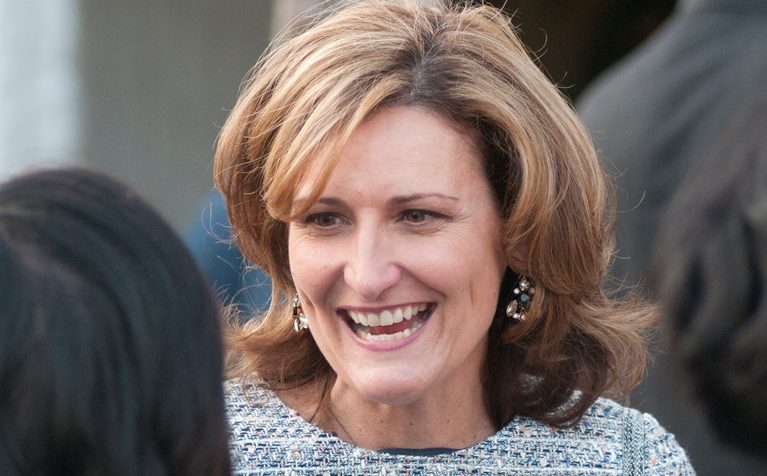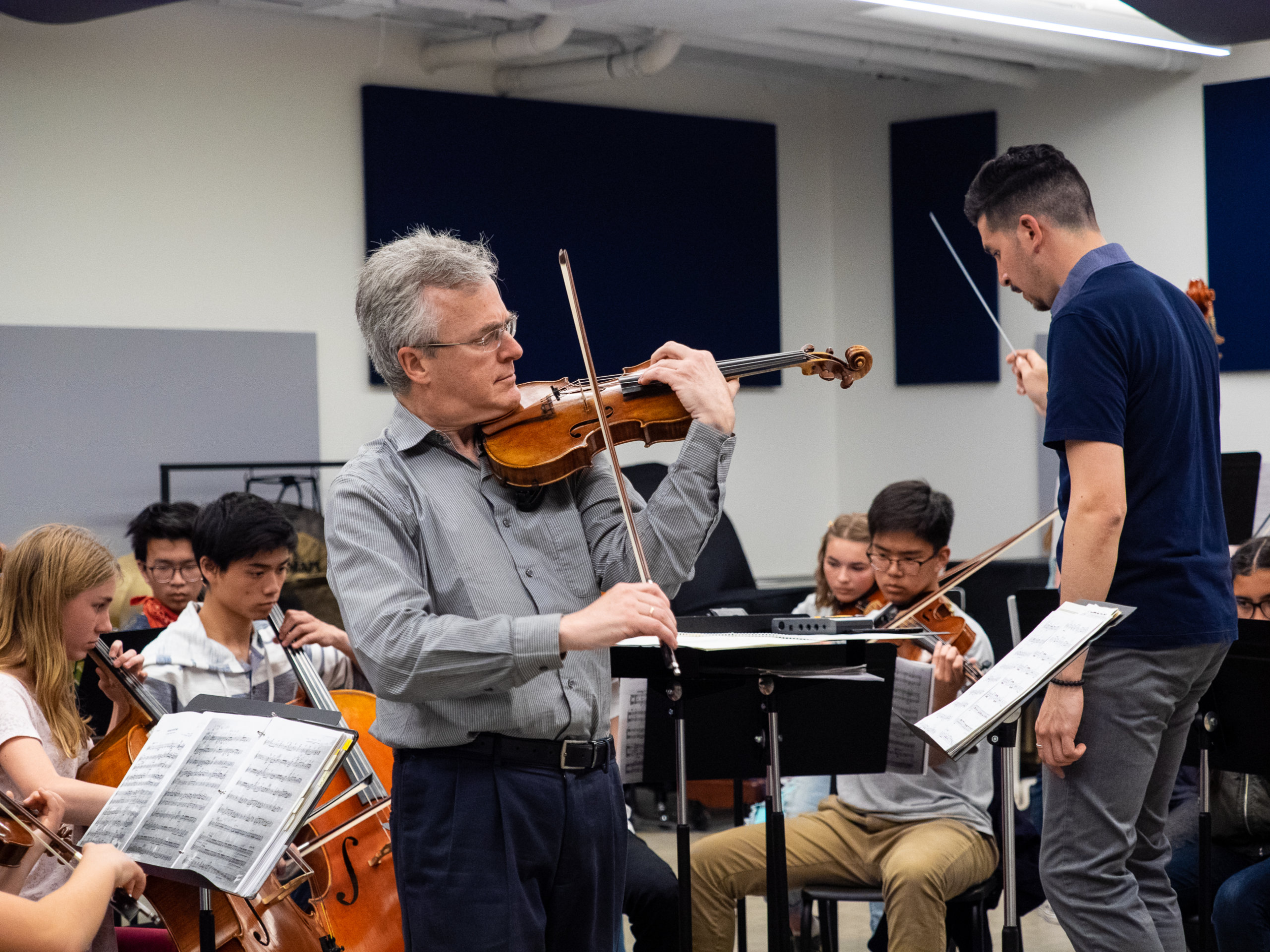
By May S. Ruiz
California School of the Arts – San Gabriel Valley (CSArts-SGV) premieres ‘Blend: Music and Motion’ featuring Los Angeles Philharmonic Concertmaster Martin Chalifour on Friday, April 19 at 7:00 pm at the Duarte Performing Arts Center. Chalifour will be the soloist with CSArts-SGV’s Philharmonic Strings and Classical & Contemporary Dance Conservatory students. The concert will highlight Edvard Grieg’s “Holberg” Suite, “Portraits” by Joel McNeely, “Navarra” by Pablo de Sarasate, and “Verano Porteño” from “The Four Seasons from Buenos Aires” by Astor Piazzolla.
Chalifour has been the principal concertmaster of the Los Angeles Philharmonic since 1995. A violinist with a career in orchestral, solo, and chamber music, he actively performs a diverse repertoire of more than 60 concertos, appearing as soloist with many prominent conductors and orchestras worldwide. Chalifour received a Certificate of Honor at Moscow’s International Tchaikovsky Competition, and is also a laureate of the Montreal International Musical Competition. He teaches at the USC Thornton School of Music and Caltech.
Prior to the concert, CSArts-SGV, in partnership with founding campus Orange County School of the Arts (OCSA), hosted a master class with Chalifour on March 1st as part of the Master Artist Series. Students from each school’s Instrumental Music Conservatory performed for Chalifour and received expert coaching and instruction. An additional 150 students from both schools observed to learn from the renowned concertmaster and their peers.
The Master Artist Series at CSArts-SGV and OCSA gives students the opportunity to gain valuable arts training and career advice from guest artists, teachers and industry professionals. Renowned specialists from the fields of dance, fine and media arts, music, and theater provide workshops, lessons, and performances to motivate students and provide once-in-a-lifetime learning experiences within their arts discipline.
Jeffrey de Seriere, Director of the Instrumental Music Conservatory, along with students Reece Fong, a high school sophomore, and Erin Braden, a 12th grader, happily talk about the Master Class and upcoming concert.
“This is the first time that Martin will be performing with our school,” de Seriere says. “We got in contact with him through Dr. Sakura Tsai, one of our string faculty members who teaches violin and viola. She had performed with Martin in the past and she thought it would be a great idea for him to work with our students. It’s a unique concert because we are also collaborating with our classical and contemporary dance conservatory. We integrate all the grade levels – 7th grade through senior – in the ensemble. There are 33 students from the philharmonic strings and 15 students from the dance conservatory on stage for this. It’s a full concert production with a total of seven pieces, two of which include some choreography.”
Fong describes the master class, “There were four participants who played the solo pieces they’ve been working on. Martin listened to them, then gave feedback, and offered suggestions on what they should improve on. It was a cool experience because we got to see Martin’s take on any music – he didn’t know beforehand what they were going to play.”
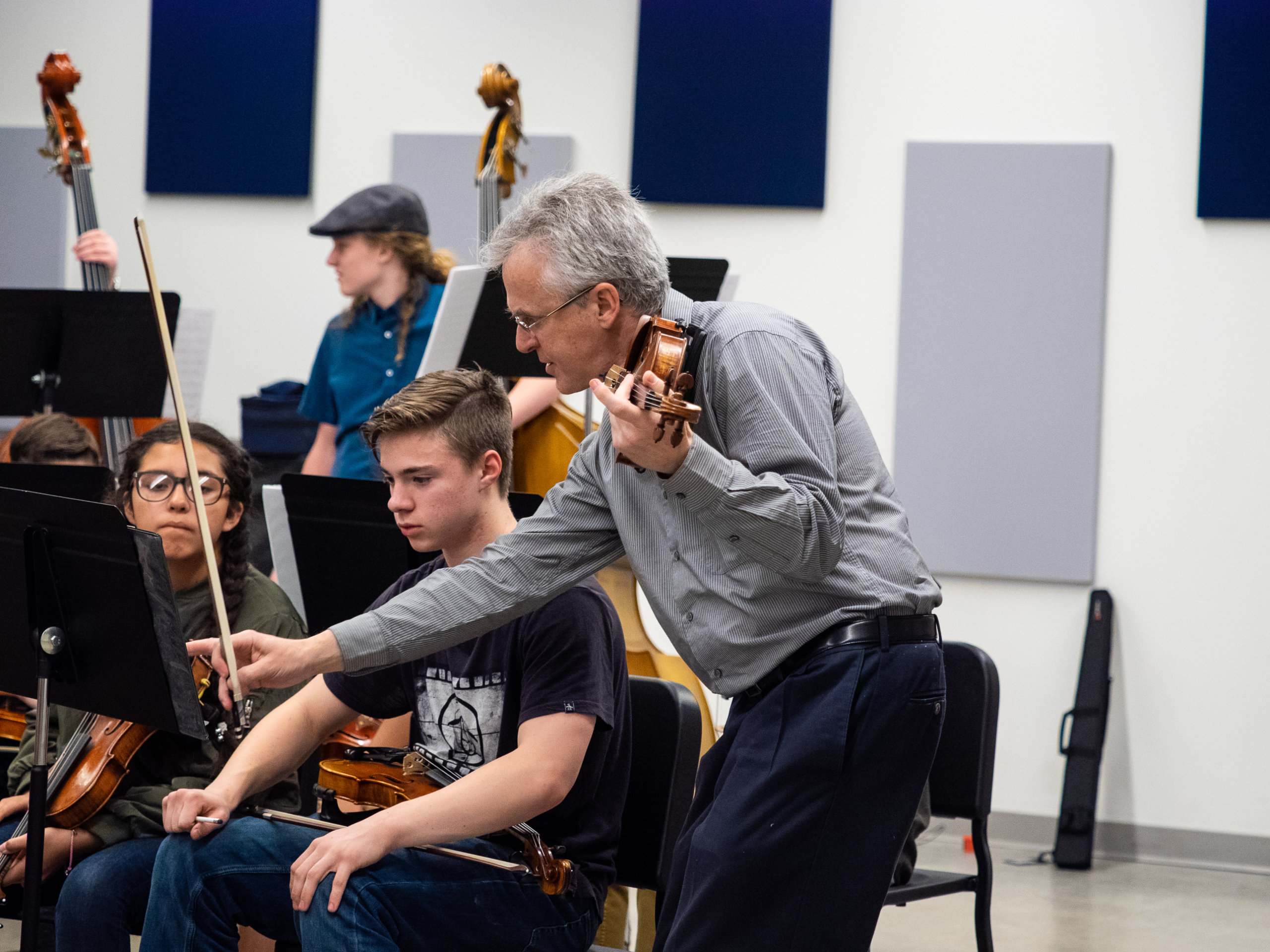
“Both Reece and Erin are on all the pieces in the concert. Erin is our second chair violinist in the orchestra and Reece is our second chair violist,” explains de Seriere. “We started rehearsing at the beginning of this semester after we came back from our winter break. Some of the music they’ve already played before but the bulk of it we only started rehearsing in January. This group rehearses regularly twice a week for one hour and ten minutes, but our soloists had two rehearsals with Martin for two hours. So we’ve only had a total of four hours rehearsing with him, with one more rehearsal with him before our performance.
“The thing that’s different for us at CSArts than other public schools is that public schools usually rehearse every single day during the week because they have a band block every single day. We only have two hours and 20 minutes of rehearsal every week combined for this group. There’s not a lot of rehearsal time which means that students have to do a lot more preparation on their own. When they come into rehearsal it’s expected of them to understand their part so we focus on putting it together as an ensemble rather than working on individual parts. Practicing is doing everything they can on their own and rehearsing is doing everything they can with everyone else and how their parts lock in together. It’s something I constantly reiterate.”
Braden pipes in, “That’s what I noticed with orchestra rehearsals – they’re short and we don’t have a lot of time within the week. It’s like a master class in that you play your piece to the best of your ability up to that point. Then coming to rehearsal pushes you further so you can learn more from the piece, get the little details you couldn’t do on your own, and polish the music. Then our conductor can help us integrate as a group and create something better.”
“One of the things Martin brought up when I first started talking with him was that he was really interested in working with dancers,” de Seriere adds. “I thought it was fantastic, as we happen to have a Classical and Contemporary Dance Conservatory. So I spoke with the dance conservatory director, Alison Dambach, and she was also excited with the idea. She got involved in the process of picking the music as well. The two pieces that Martin is soloing in with us were music that we all decided would be great to have choreography to. One of them is a piece by Argentinian composer named Astor Piazzolla, something that’s essentially a tango but is also modeled after Vivaldi’s Four Seasons, which a lot of people are familiar with. So there’s a little bit of Vivaldi in there too.”
Continues de Seriere, “So it’s not a typical orchestra concert because we have a soloist on the multiple pieces and choreography going on. We normally do our rehearsals twice a week but since we’ve had this added layer to it, we’re holding more rehearsals. Last night for example, we had the dancers in our rehearsal room over here and we were running through it to make sure the tempo was right for the dancers.”
Fong agrees, “It was a good rehearsal – it was the first time that we got to hear Dr. Tsai play the solo with Martin. They were both really prepared and played very well; I think the audience will be super impressed.”
“It’s different,” Braden supplements. “I don’t think we’ve had a concert where we’ve been on stage with two soloists and choreography dance. It gives a different vibe. We don’t do this very often and I think it’s a pretty good experience for us and the audience. I’m excited and I think it’s really cool that we’re doing the dance. It’s fun watching them dance. Usually you’re focused on the piece but now we’re connecting with another group of students.”
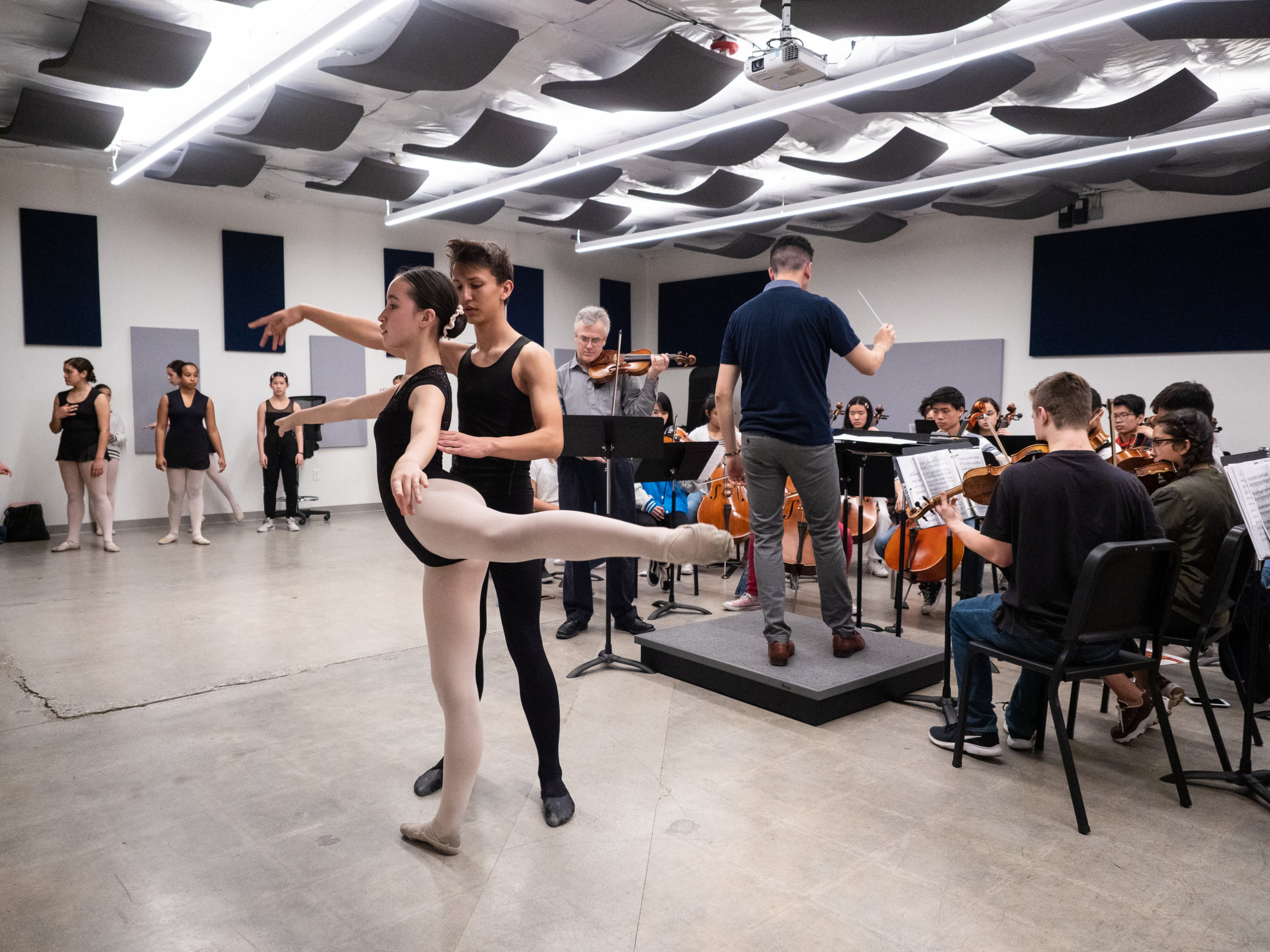
Elaborates de Seriere, “They’ve both mentioned that they’re excited about doing this performance with dancers because one of the things I want to do here is ensure that students are involved in collaborations which may not be available at a normal public school. Musicians and dancers collaborate all the time in the entertainment world. But students in high school don’t usually get to interact at this high art level. Ballet is something that is very popular and there’s plenty of music that’s been written for ballet – both Stravinsky and Tchaikovsky have written for ballet – but it’s not as popular today. I don’t think it’s because it’s not a viable thing, it’s just not happening enough. This is their first time accompanying dancers who are trained in ballet.”
“Yesterday we worked on the speed and tempo, which musicians know well,” de Seriere continues. “As the conductor, I have to follow the dancers and figure out what works best for them. We’re all collaborating and seeing what’s going to be most beneficial to the overall product. That’s something they wouldn’t normally get at a public high school, but it was something that Alison and I thought would be a good experience for them. And it’s great for the dancers too because they’re hearing a lot of the lingo we’re throwing around – like dynamic and tempo – that crosses over to dance, but some will be completely new to them. We call it co-lab because it really is a lab where students are seeing and interacting with the other artists who are outside of their subject area.”
Asked what CSArts-SGV offers, Fong responds, “I’ve been playing the viola since 6th grade. Before I went to CSArts I didn’t have an environment where I constantly knew what I had to do to improve and have fun with it as well. At my old school it was just orchestra and we had one performance at the end of the semester. Here, you’re focused on your craft and you have more time to work on it. Mr. D and Dr. Tsai both know what you have to do and they push you and that really helps.”
“I think it’s a really good place because it’s a nurturing environment; we all learn together,” Braden answers. “Of course there are other schools like LACHSA and Colburn which concentrate on music and arts but I like this school because it also has great academics. At the same time, we each have so much focus on our instruments or our talents. Dr. Tsai helps us with the details on our pieces that other schools won’t provide. There’s orchestra but that’s about it in normal school. We also have the chance to perform for other students. If you want to be a performance major, that’s something you can focus on here and teachers can help you. Each teacher knows each kid pretty well here – we’re not a huge school yet – and ensures they get where they want to be. It’s good for goals. I’m hoping to pursue a degree in Music to be a music teacher or music therapist and attend either Southern Utah University or BYU (Brigham Young University) and CSArts-SGV has provided me with excellent preparation.”
De Seriere expounds, “This is the second year that the school has existed and this year we’ve had three performances with this orchestra. We played for the City of Hope Tree Lighting, we had our own Fall Concert, and we played at Festival. We have the performance with Martin, then there’s another Festival that we’re performing at, then we have our end-of-the-year production. By the time the year is done, we would have had eight performances.”
This weekend, Braden and Fong will perform and demonstrate how far they’ve come since. And with Chalifour to imbue the concert with gravitas, it should be a magnificent treat for us!

